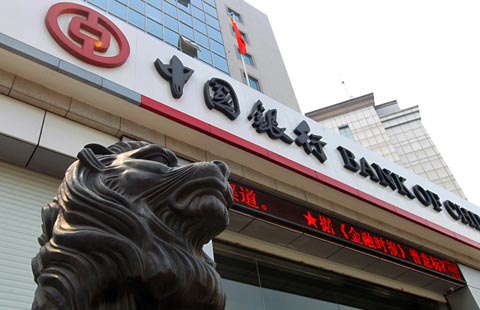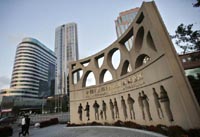Funds from China boost roads, ports in Sri Lanka
By ZHONG NAN (China Daily) Updated: 2014-09-17 04:13Sri Lanka's hunger for infrastructure and new market growth points has attracted an increasing number of Chinese enterprises to invest money and resources over the past five years to gain a larger foothold in a rapidly developing market.
After the prolonged civil war ended in 2009, Sri Lanka has been keen to take advantage of its geographical location as a transportation hub in the Indian Ocean, and its political stability, quality labor force and scenic landscape.
Eager to restore the country's earning power, the Sri Lanka government has been taking an open attitude toward foreign investment in the infrastructure sector to build more roads, ports, dams, power stations and logistics warehouses to compete with other rivals in the region.
Sinohydro Corp Ltd, the international arm of the Power Construction Corp of China, is building the second phase of the Port Hambantota project, a natural harbor on the southern tip of Sri Lanka close to international shipping routes.
With more than $500 million of investment, the port will become the largest port in South Asia and is scheduled to become operational by the end of this year.
Liang Jun, chairman of Sinohydro, said Sri Lanka has huge potential to become an important international maritime transportation hub, similar to Singapore or Hong Kong, that would benefit the people by building more port facilities, dams and regional and international airports.
"The proposed 21st Century Maritime Silk Road initiative can be a critical motivation for Sri Lanka to enhance its position in port development in the Indian Ocean and continue to build closer ties with China, India and other Association of Southeast Asian Nations members," Liang said.
In May, Sinohydro won a $122 million contract for the construction of the Kaluganga Dam in central Sri Lanka. The dam is expected to be operational by the end of 2018.
Funded by the Saudi Fund for Development, Kuwait Fund for Arab Economic Development and the fund of the Organization of the Petroleum Exporting Countries, the dam will provide power and water to Sri Lanka's central and eastern provinces.
China has become Sri Lanka's biggest source of foreign direct investment, accounting for 24 percent of Sri Lanka's total FDI in 2013. China also provides development loans and aid for projects such as the country's first four-lane expressway, school buildings, water purification plants and reservoirs.
Like Sinohydro, other Chinese infrastructure and civil engineering companies, such as China Gezhouba Group Co Ltd, China Communications Construction Co, China State Construction Engineering Corp and China Road and Bridge Corp, have all been active players in Sri Lanka in the past five years.
Diao Chunhe, president of China International Contractors Association, which helps Chinese companies facilitate new business in overseas market, said Chinese companies are attractive contractors to the Sri Lanka government and business partners. Not only do they tend to deliver projects speedily and efficiently, often before deadline, but they also come with their own funding model, Diao said.
"Chinese companies are capable of coordinating finance for a project through Chinese institutions such as the Export-Import Bank of China or China Development Bank to build infrastructure projects in emerging markets such as Sri Lanka, Argentina, Nigeria and Angola," said Diao. "They also do not generally seek sovereign guarantees when working with local partners."
Ranjith Uyangoda, Sri Lankan ambassador to China, said investments from China have played a key role in Sri Lanka's post-war reconstruction, contributing to foreign exchange reserves and job creation.
To ensure sustainable growth, the Sri Lanka government has entered into 27 investment protection agreements with foreign governments and is a founding member of the Multilateral Investment Guarantee Agency of the World Bank, according to the 2013 Investment Climate Statement-Sri Lanka issued by the US State Department.
- iPhone 6 spawns Chinese satire
- FTA high on agenda of China, Sri Lanka
- Horticultural expo wins international approval
- ICBC becomes renminbi clearing bank in Luxembourg
- Jack Ma shows up in Singapore for Alibaba IPO roadshow
- Beijing business aviation show opens
- Russian firm completes pressure testing of reactor vessel
- China's dirty coal ban may threaten Australian exports: experts

















